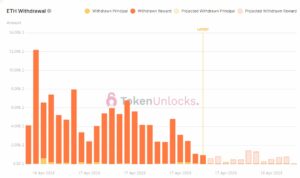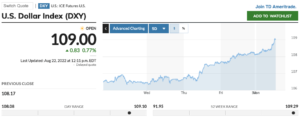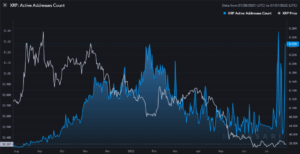
Central banks around the world continue to be a major force in the gold market, helping the precious metal maintain its long-term support levels despite the challenges posed by rising bond yields and a strong U.S. dollar, according to a Kitco News article, which cites data from the World Gold Council (WGC), by Neils Christensen.
The WGC revealed that central banks purchased 77 tonnes of gold in August 2023, marking a 38% increase compared to July. Over the last three months, these institutions have acquired 219 tonnes of gold. Analysts from the WGC suggest that the demand from central banks is likely to remain strong throughout the year.
Krishan Gopaul, a senior analyst at the WGC, stated in the Kitco article that the recent buying activity indicates a shift from the net selling observed in April and May, primarily due to heavy, non-strategic selling from Turkey. Gopaul expressed confidence that the long-term trend of robust demand from central banks is here to stay.
However, the WGC report also notes that this buying activity is concentrated among a few central banks. China’s central bank, for instance, purchased 29 tonnes of gold in August, continuing to lead in the market. Since November of the previous year, the People’s Bank of China has increased its gold reserves by 217 tonnes, reaching a total of 2,165 tonnes, which accounts for just over 4% of its total foreign reserves.
The National Bank of Poland is another significant player, having bought 18 tonnes of gold in August. Poland’s national bank has apparently acquired 88 tonnes of gold this year and aims to reach a 100-tonne target set in 2021. The gold reserves of Poland now stand at 314 tonnes, making up 11% of the country’s total foreign reserves.
<!--Turkey, which had been selling gold in April and May, bought 15 tonnes in August. Other central banks that increased their gold reserves include Uzbekistan with 9 tonnes, the Reserve Bank of India, Czech National Bank, and the Monetary Authority of Singapore, each with 2 tonnes, and the National Bank of the Kyrgyz Republic with 1 tonne.
The Kitco News report also mentions that there were no significant sellers of gold among central banks in August. However, there are unconfirmed reports that the Central Bank of Bolivia may have “monetized” 17 tonnes of its gold reserves, which, if confirmed, would represent a 40% decline in its gold reserves.
Kitco points out that the demand from central banks has been a crucial support pillar for the gold market, especially as investment demand has been weak for most of 2023, and highlights that rising bond yields have made it more costly to hold non-yielding assets like gold. For instance, 10-year yields have recently surged to 16-year highs, exceeding 4.7%. This has led to a decline in gold prices, falling below $1,900 an ounce.
The Kitco article concludes by noting that according to analysts, such as Colin Cieszynski, chief market strategist at SIA Wealth Management, despite strong selling pressure, the price of gold has shown resilience, largely due to the ongoing demand from central banks. Analysts believe that this demand will continue as nations look to diversify away from the U.S. dollar.
Featured Image via Midjourney
- SEO Powered Content & PR Distribution. Get Amplified Today.
- PlatoData.Network Vertical Generative Ai. Empower Yourself. Access Here.
- PlatoAiStream. Web3 Intelligence. Knowledge Amplified. Access Here.
- PlatoESG. Carbon, CleanTech, Energy, Environment, Solar, Waste Management. Access Here.
- PlatoHealth. Biotech and Clinical Trials Intelligence. Access Here.
- Source: https://www.cryptoglobe.com/latest/2023/10/central-banks-buy-77-tonnes-of-gold-in-august-helping-to-offset-impact-of-rising-bond-yields/
- :has
- :is
- :not
- $UP
- 1
- 15%
- 17
- 2021
- 2023
- 29
- 77
- 9
- a
- According
- Accounts
- acquired
- activity
- Ads
- aims
- All
- also
- among
- an
- analyst
- Analysts
- and
- Another
- April
- ARE
- around
- article
- AS
- Assets
- At
- AUGUST
- authority
- away
- Bank
- Bank of China
- Bank of India
- Banks
- BE
- been
- believe
- below
- bond
- Bond yields
- bought
- buy
- Buying
- by
- central
- Central Bank
- Central Banks
- challenges
- chief
- China
- Chinas
- Christensen
- compared
- Concentrated
- confidence
- CONFIRMED
- continue
- continuing
- costly
- Council
- country’s
- crucial
- CryptoGlobe
- Czech
- data
- Decline
- Demand
- Despite
- diversify
- Dollar
- due
- each
- especially
- expressed
- Falling
- few
- For
- Force
- foreign
- from
- Gold
- Gold Prices
- had
- Have
- having
- heavy
- helping
- here
- highlights
- Highs
- hold
- However
- HTML
- HTTPS
- if
- image
- Impact
- in
- include
- Increase
- increased
- india
- indicates
- instance
- institutions
- investment
- IT
- ITS
- July
- just
- Kitco
- largely
- Last
- lead
- Led
- levels
- like
- likely
- long-term
- Look
- made
- maintain
- major
- Making
- management
- Market
- marking
- May..
- mentions
- metal
- MidJourney
- Monetary
- monetary authority
- Monetary Authority of Singapore
- months
- more
- most
- National
- National Bank
- Nations
- Neils Christensen
- net
- news
- no
- Notes
- noting
- November
- now
- observed
- of
- offset
- ongoing
- Other
- out
- over
- people’s
- People’s Bank Of China
- Pillar
- plato
- Plato Data Intelligence
- PlatoData
- player
- points
- Poland
- posed
- Precious
- pressure
- previous
- price
- Prices
- primarily
- purchased
- reach
- reaching
- recent
- recently
- remain
- report
- Reports
- represent
- Republic
- Reserve
- reserve bank
- Reserve Bank of India
- reserves
- resilience
- Revealed
- rising
- robust
- s
- Screen
- screens
- Sellers
- Selling
- senior
- set
- shift
- shown
- significant
- since
- Singapore
- sizes
- stand
- stated
- stay
- Strategist
- strong
- such
- suggest
- support
- support levels
- Surged
- Target
- that
- The
- The Reserve Bank of India
- the world
- their
- There.
- These
- this
- this year
- three
- throughout
- to
- Total
- Trend
- Turkey
- u.s.
- u.s. dollar
- use
- uzbekistan
- Wealth
- wealth management
- were
- WGC
- which
- will
- with
- world
- World Gold Council
- would
- year
- yields
- zephyrnet











